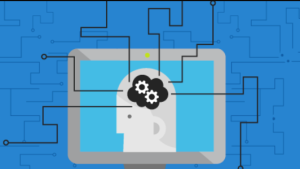
Gauging Human Emotions at the Stroke of a Key

Indian researchers using text pattern analysis and “keystroke dynamics” claim they have designed a computer program that can accurately recognize a computer user’s emotions. “Depending on the emotion,” the researchers claimed, they accurately recognized and “emotional states” most of the time, indeed with great precision: 87 percent.
Writing in the journal Behavior & Information Technology, a team of Indian researchers asked volunteer typists to note their emotional state after typing “fixed” text along with prescribed intervals of regular computer use. The keystroke data was then associated with seven emotional states: joy, fear, anger, sadness, disgust, shame and guilt.
Joy (87 percent) and anger (81 percent) had the highest rates of accuracy, the researchers reported.
“Traditionally, interactions between humans and machines like computers do not exhibit any emotional exchanges,” the researchers noted. “If we could build any system that is intelligent enough to interact with humans that involves emotions, that is, it can detect user emotions and change its behavior accordingly, then using machines could be more effective and friendly.”
Keystroke dynamics have been used in other fields, including biometrics and authentication. The technique includes “dwell time” (the time elapsed between key press and release) and “flight time” (time elapsed between key release to the next key press).
The researchers sought to leverage keystroke dynamics as a cheap and reliable way of gauging the interaction between machines and humans. A “standard keyboard is a very cheap and available hardware that can be used to identify user emotion,” the researchers noted. “That is the main reason we have chosen keystroke attributes to identify user emotion. Moreover, we will use user input texts to analyze text patterns and also sentence-level processing to assess user emotion.”
Test subjects were presented with two paragraphs from the 1865 children’s classic by Lewis Carroll, Alice’s Adventures in Wonderland. The novel was chosen for its relatively simple sentence structure and absence of large, uncommon English words.
The researchers added that fixed text was chosen over free text to reduce the amount of time a mouse rather than a keyboard was used to enter text. “Fixed text showed better results in indication of specific emotions,” the researchers concluded.
To process the results, they developed software to collect data and extract attributes from the results. The two-step collection process involved fixed-text data using Java-based software while free-text data were gathered using different software written in the C# (C Sharp) programming language.
While claiming success in tracking the seven emotional states, the researchers acknowledged that “users are normally unwilling to provide data when they are in negative emotional states” like anger, disgust or sadness. Hence, future research will attempt to mitigate these effects while trying speed up data collection to less than the seven weeks required for this experiment.
If in fact the research using keystroke dynamics pans out, the investigators should have little trouble determining the emotional state of this writer: harried!
Recent items:
Skytree Hangs Machine Learning on Hadoop
Saffron Gets $7M to Build Brain-Like Learning Machine






























